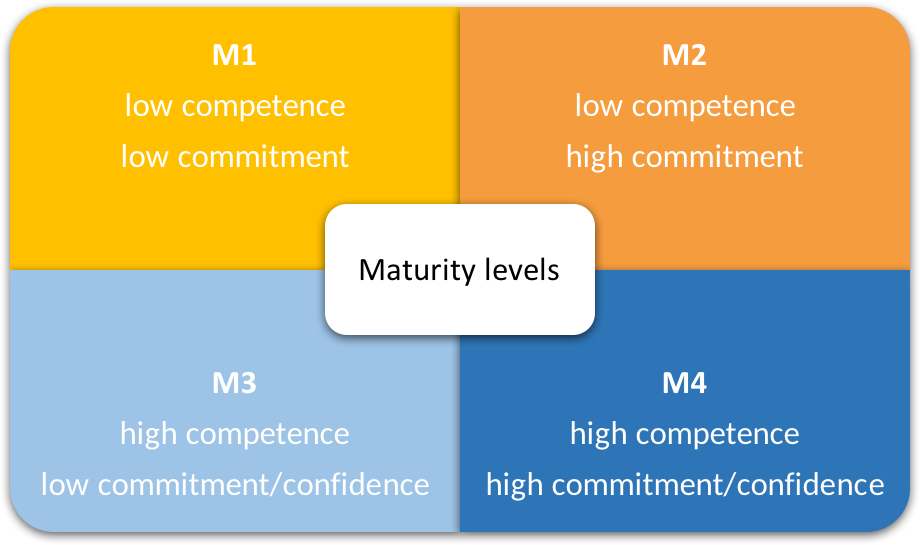
Situational theories of leadership work on the assumption that the most effective style of leadership changes from situation to situation. To be most effective and successful, a leader must be able to adapt his style and approach to diverse circumstances.
For example, some employees function better under a leader who is more autocratic and directive. For others, success will be more likely if the leader can step back and trust his team to make decisions and carry out plans without the leader’s direct involvement. On a similar note, not all types of industries and business settings require the same skills and leadership traits in equal measure. Some fields demand a large measure of innovation, whereas in others, personal charisma and relational connection with clients are far more important.
Different theories have been developed that recognize the situational aspects of leadership. Each theory attempts to provide its own analysis of how leadership can be most successful in various situations. Let’s consider a few of the key theories.
The term “situational leadership” is most commonly derived from and connected with Paul Hersey and Ken Blanchard’s Situational Leadership Theory. This approach to leadership suggests the need to match two key elements appropriately: the leader’s leadership style and the followers’ maturity or preparedness levels.
The theory identifies four main leadership approaches:
In addition to these four approaches to leadership, there are also four levels of follower maturity:

In Hersey and Blanchard’s approach, the key to successful leadership is matching the proper leadership style to the corresponding maturity level of the employees. As a general rule, each of the four leadership styles is appropriate for the corresponding employee maturity level:

Maturity levels and leadership styles
Identifying the employee maturity level becomes a very important part of the process, and the leader must have the willingness and ability to use any of the four leadership styles as needed.
Another situational theory of leadership has been developed by Daniel Goleman. His theory incorporates his development of the concept of emotional intelligence. He develops that idea into six categories of situational leadership, describing the leadership style and suggesting when each style is most appropriate and likely to be successful:
| Pacesetting Leader | The leader sets aggressive goals and standards and drives employees to reach them. This works with highly motivated and competent employees, but can lead to burnout due to the high energy demands and stress levels. |
| Authoritative Leader | The leader authoritatively provides a direction and goals for the team, expecting the team to follow his lead. The details are often left up to the team members. This works well when clear direction is needed, but can be problematic if the team members are highly experienced and knowledgeable and might resent being dictated to. |
| Affiliative Leader | A positive reinforcement and morale-boosting style. The leader praises and encourages the employees, refraining from criticism or reprimand. The goal is to foster team bonding and connectedness, along with a sense of belonging. This approach works best in times of stress and trauma or when trust needs to be rebuilt. It is not likely to be sufficient as a long-term or exclusive strategy. |
| Coaching Leader | The leader focuses on helping individual employees build their skills and develop their talents. This approach works best when employees are receptive to guidance and willing to hear about their weaknesses and where they need to improve. |
| Democratic Leader | The leader intentionally involves followers in the decision-making process by seeking their opinion and allowing them a voice in the final decision. This works well when the leader is in need of guidance and/or the employees are highly qualified to contribute and there are not strenuous time constraints that require quick decisions. |
| Coercive Leader | The leader acts as the ultimate authority and demands immediate compliance with directions, even applying pressure as needed. This can be appropriate in times of crisis or disaster, but is not advisable in healthy situations. |
One final theory we will look at is Vroom and Yetton’s Normative Decision Theory. This approach is intended as a guide in determining the optimum amount of time and group input that should be committed to a decision. A leader has a number of options available to him in this regard:
Victor Vroom and Phillip Yetton provide a model that helps leaders decide when to use each approach. The model walks leaders through a series of questions about the decision to be made, and the answers will lead the decision maker to the suggested approach. The questions focus on a few key factors:
Leaders are challenged not only to make good decisions, but to decide who decides. At times, the best choice is to involve others in the decision.
Licenses and Attributions CC licensed content, Original